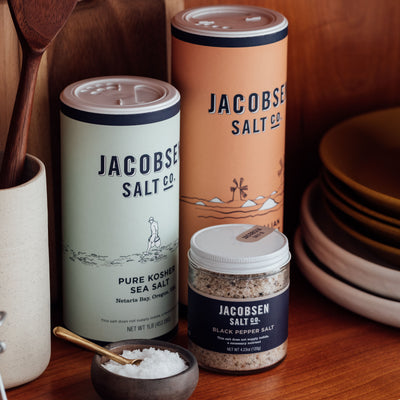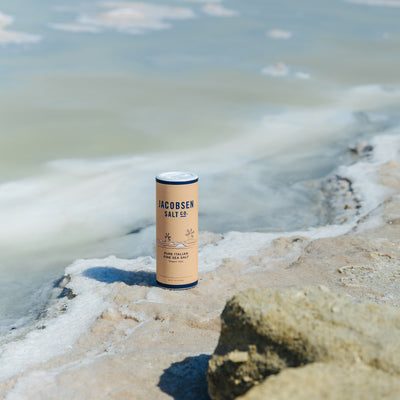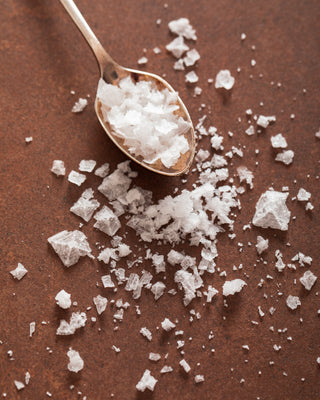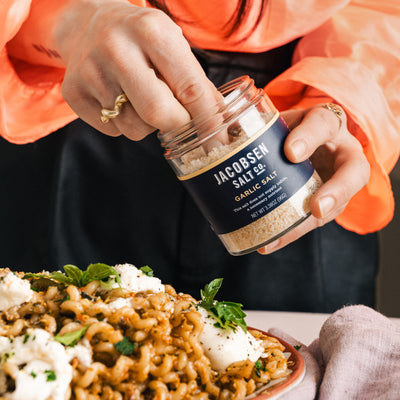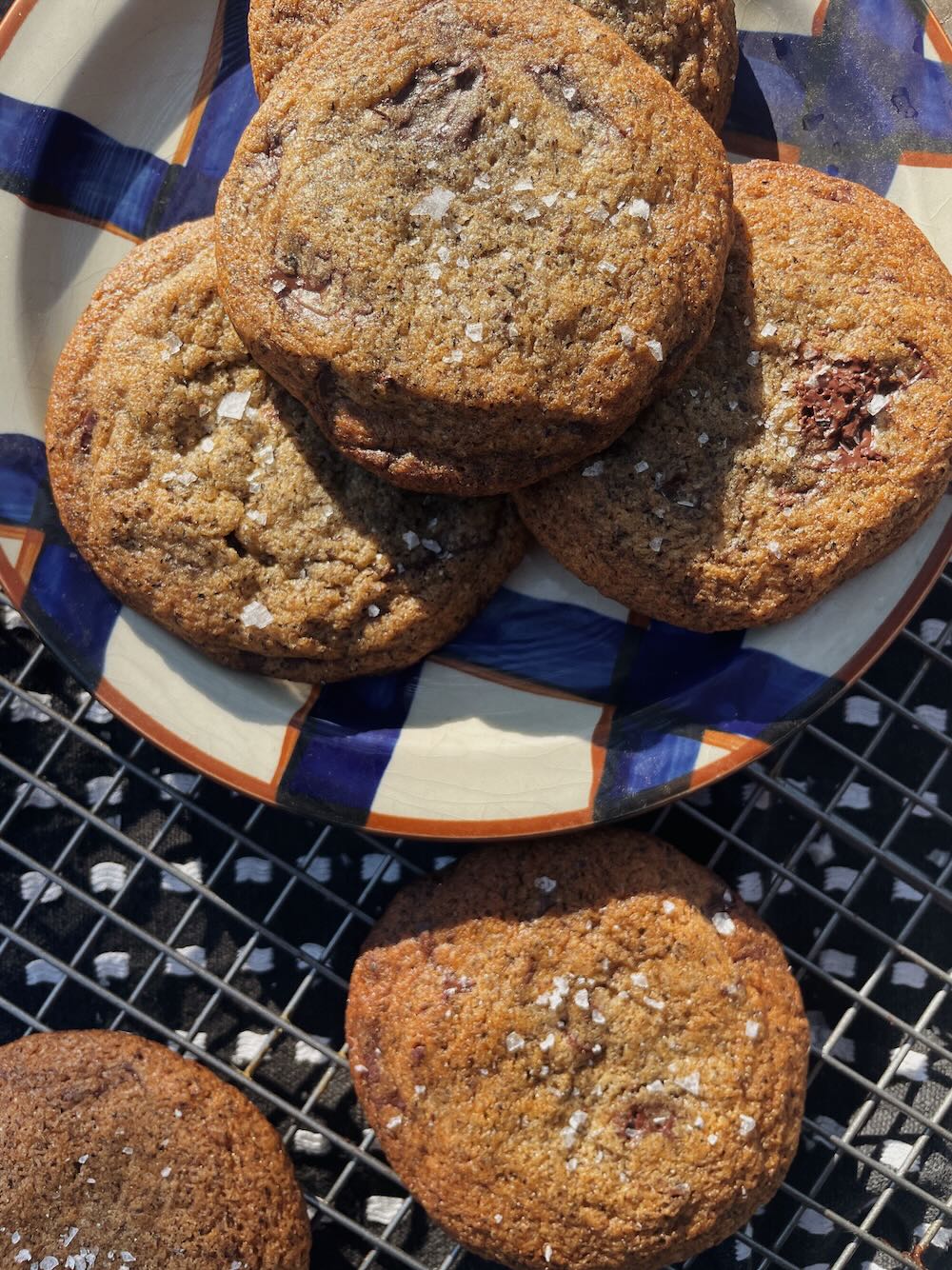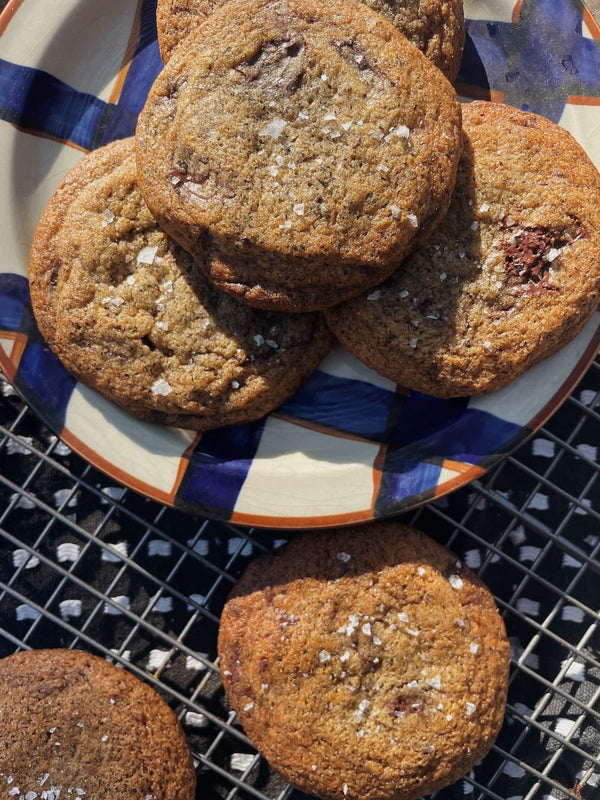

Easy Overnight Focaccia
Posted by:
Jacobsen Salt Co.
Posted on:
Aug 23, 2023
Shop The Recipe
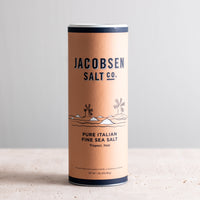
Pure Fine Sea Salt
$10
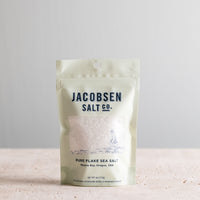
Pure Flake Sea Salt
$15
If you're new to bread baking or are looking for an easy, hands-off bread to try, focaccia is the one! This recipe makes one that’s crisp on the outside and pillowy on the inside. It comes together with no kneading and no special equipment required, and is very adaptable, too! Once you learn the basic recipe, feel free to add herbs, infused salts, roasted garlic, or anything else to make it your own.
Because bread has very few ingredients, it’s important to use quality ones, especially when it comes down to salt. Like anything else you cook or bake, bread has to be well-seasoned. For the dough itself, I like to use JSC’s Trapani Pure Italian Fine Sea Salt. Its finer grain incorporates very well into the dry ingredients. For the top of the focaccia, I highly recommend JSC’s Pure Flake Sea Salt. It has a delicate crunch that pairs well with the crispy crust.
I make this recipe at least once a week! It works great as a side for soups and salads, or as bread for sandwiches, like this Caprese Sandwich.
Note: Plan some extra time for this one, although it’s an easy, hands-off recipe, this focaccia requires an overnight fermentation. This long process aids in the light, airy outcome.
Recipe by: Rosemary Saycich
Makes 1 Focaccia Loaf
Process
Start by whisking together your flour, salt and yeast. Because we are using instant yeast, it doesn’t need to be bloomed in water, we can add it directly into the dry ingredients.

Next add in your warm water, and mix together with a wooden spoon or your hand. It will be very wet and sticky! Focaccia is a high-hydration dough by nature, which provides us with those wonderful air bubbles and chewy finish. Once the wet and dry are fully combined, cover and let sit for 30 minutes.
After 30 minutes, dampen your hands (to help prevent sticking) and give the dough one fold. You’ll do this by taking one corner of the dough and folding it over itself. Rotate the bowl and repeat this fold until every corner has been pulled and stretched over (4 to 5 times). Drizzle the top of the dough with a good amount of olive oil (1-2 tablespoons). This way the dough will not dry out when in the fridge.
Cover the bowl tightly (with plastic wrap or a tight fitting lid), and move to the refrigerator for its bulk rise, at least 12 hours, and up to 24 hours.
Remove the dough from the fridge and uncover. Generously oil your 9x12 baking pan (or sheet pan), we don't want it to stick! Punch down the dough and turn it over into your prepared pan. Cover the dough and allow it to relax at room temperature, which can take anywhere from 2-4 hours depending on how warm your room is.

Once the dough has almost reached the corners of the pan, and puffed up quite a bit, we’re ready to bake! Preheat your oven to 425ºF.
Once your oven has reached temperature, dimple the dough right before baking. To do this, dampen your fingertips and gently press them into the dough being careful not to rip the dough or poke through. Repeat until the entire surface of the dough has been dimpled (don’t over do it here, it’s easy to keep dimpling but we don’t want to knock out too much of the volume and air).Drizzle the top of the dough with olive oil, and a few pinches of flaky salt. Immediately transfer to the oven and bake for 30 min or until golden on top.
Once done baking, let cool for 5 min, then remove from the pan and let cool completely on a wire rack before enjoying.

